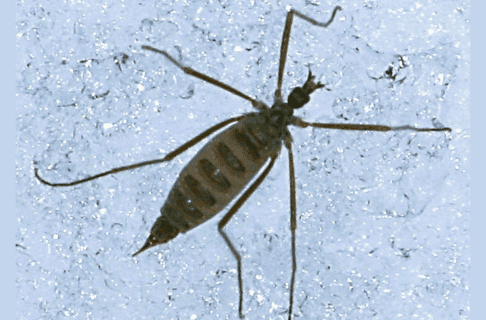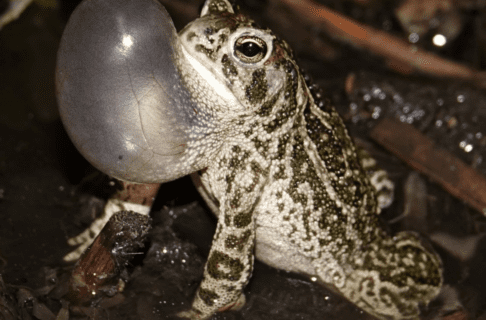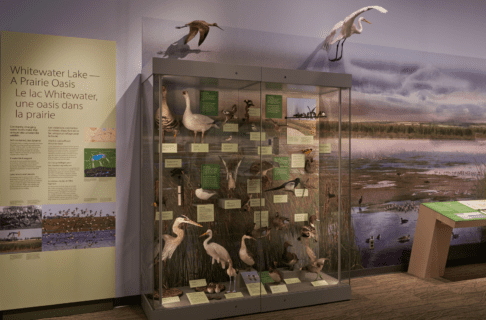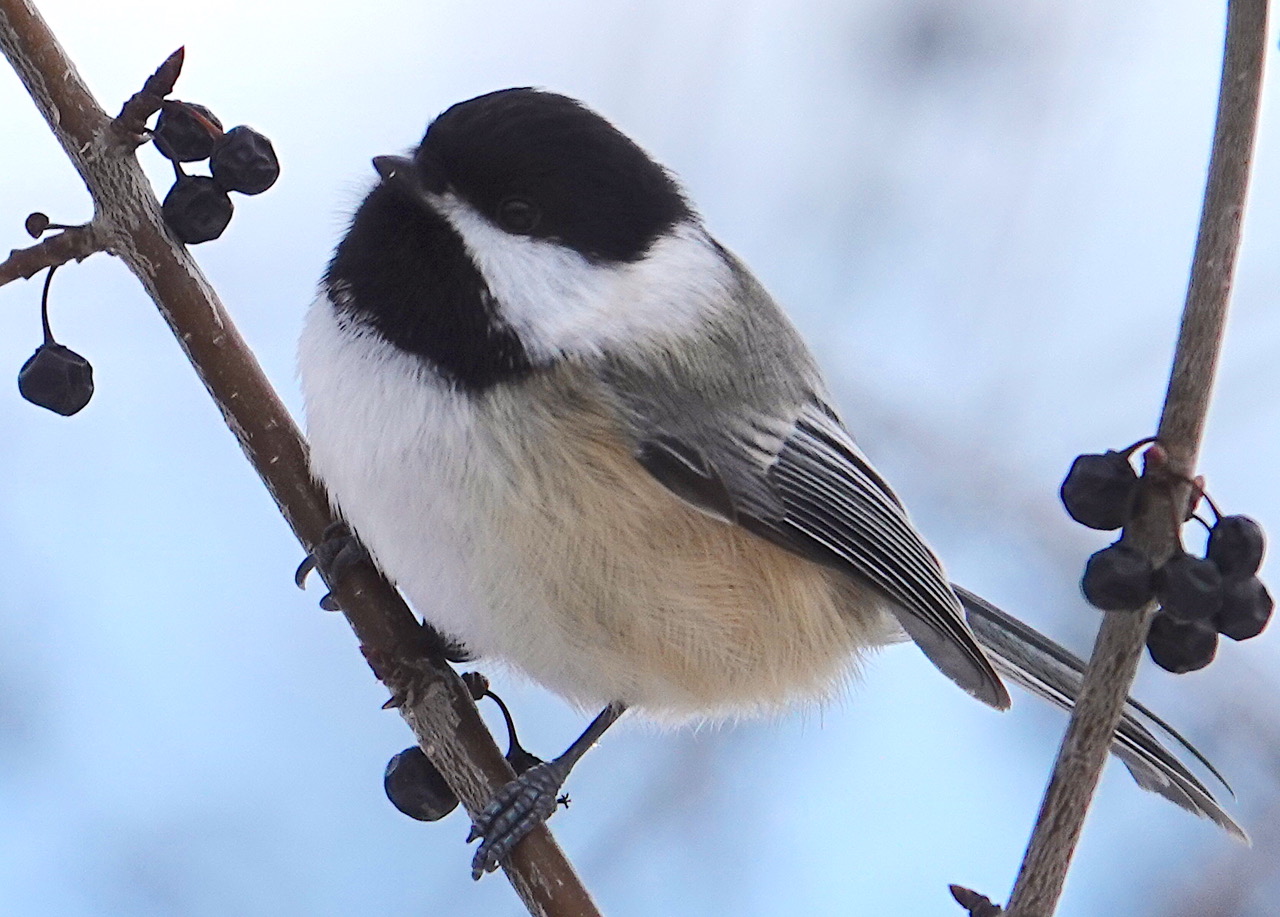
A Manitoba winter, especially this one, without the friendly, buzzy, “chick-a-dee-dee” calls of our neighbourhood black-capped chickadees (Poecile atricapillus) would be that much harder to endure. The prolonged cold spells, incredible wind chills, and many blizzards made these birds and their cheery presence even more welcome at our backyard feeders. But while we were entertained watching from behind the window of a warm house, these tiny, 14-gram balls of fluff (just a little heavier than a AAA battery) were flitting about outside in -35°C temperatures amidst blowing snow. How do they do it?!
There certainly is a long list of challenges for a small bird to survive a northern winter. Low temperatures are the obvious one. Small animals have a higher surface to volume ratio than larger animals, meaning they expose relatively more body surface to the elements per gram of weight – small animals lose heat more quickly than large animals. Chickadees have a normal body temperature of about 40°C, meaning that on a day of -40°C (not unusual over much of its northern distribution in Manitoba) there is an 80°C gradient through 2 cm of feathers from outside air to skin. And winter days are short, meaning fewer daylight hours to gather enough food to maintain that body temperature.
Chickadees have several adaptations to fend off winter’s worst. Feathers, as some of us know from our down-filled parkas, are extraordinarily good insulation. But all adult birds have feathers, and most migrate south for winter. So what else do chickadees do?
Well, our chickadees are likely to be extra buff in winter! Relatives of Manitoban chickadees have been shown to have chest muscles up to 30% larger in winter than in summer. Chickadees spend little time in continuous flight in their daily activities, so why would these flight muscles get bigger in winter? These larger chest muscles are vital sources of heat production. Chickadees use bursts of shivering to create heat and these muscles do that work, as well as power flight.
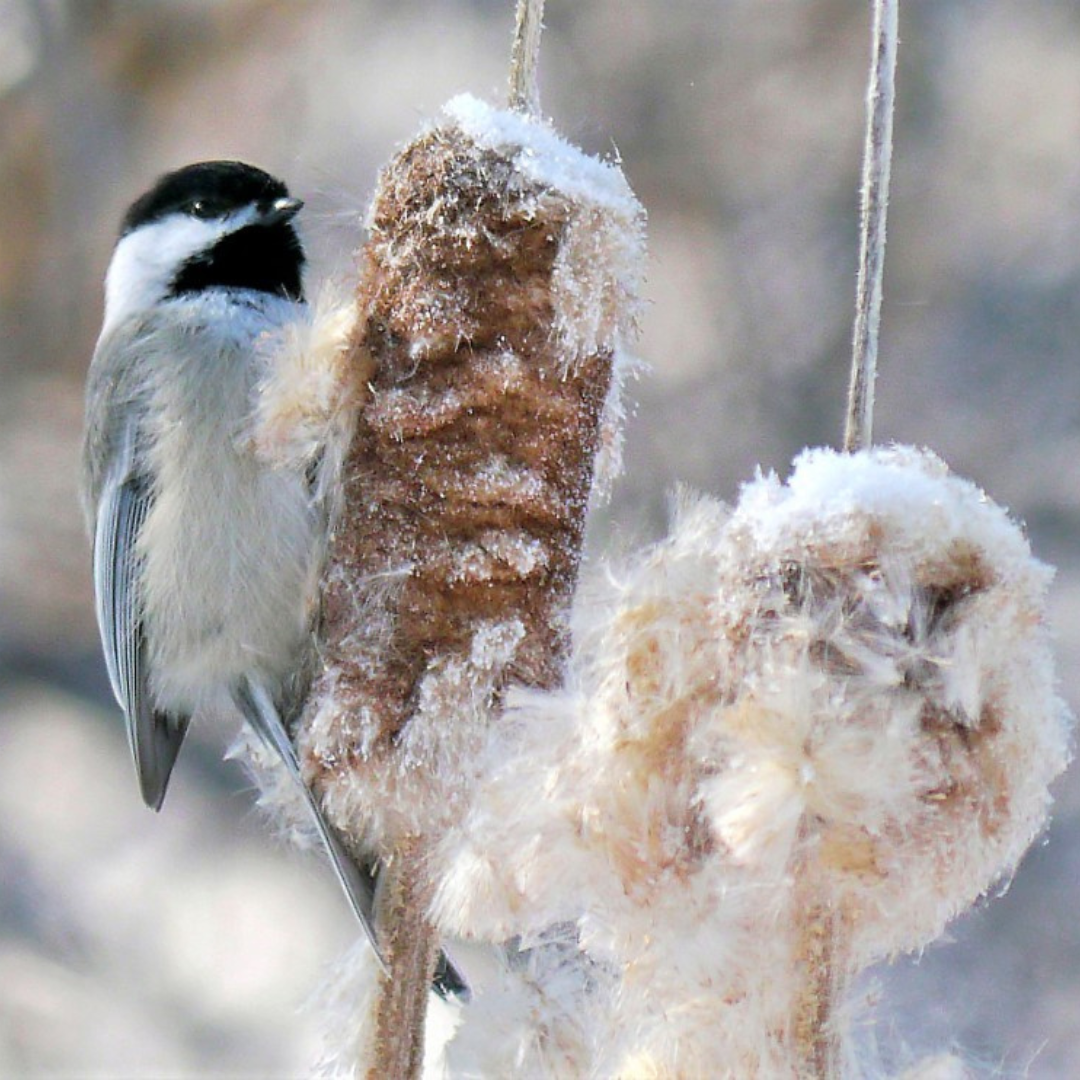
A chickadee searching a cattail for overwintering insect larvae. (Image ©Peter Taylor)
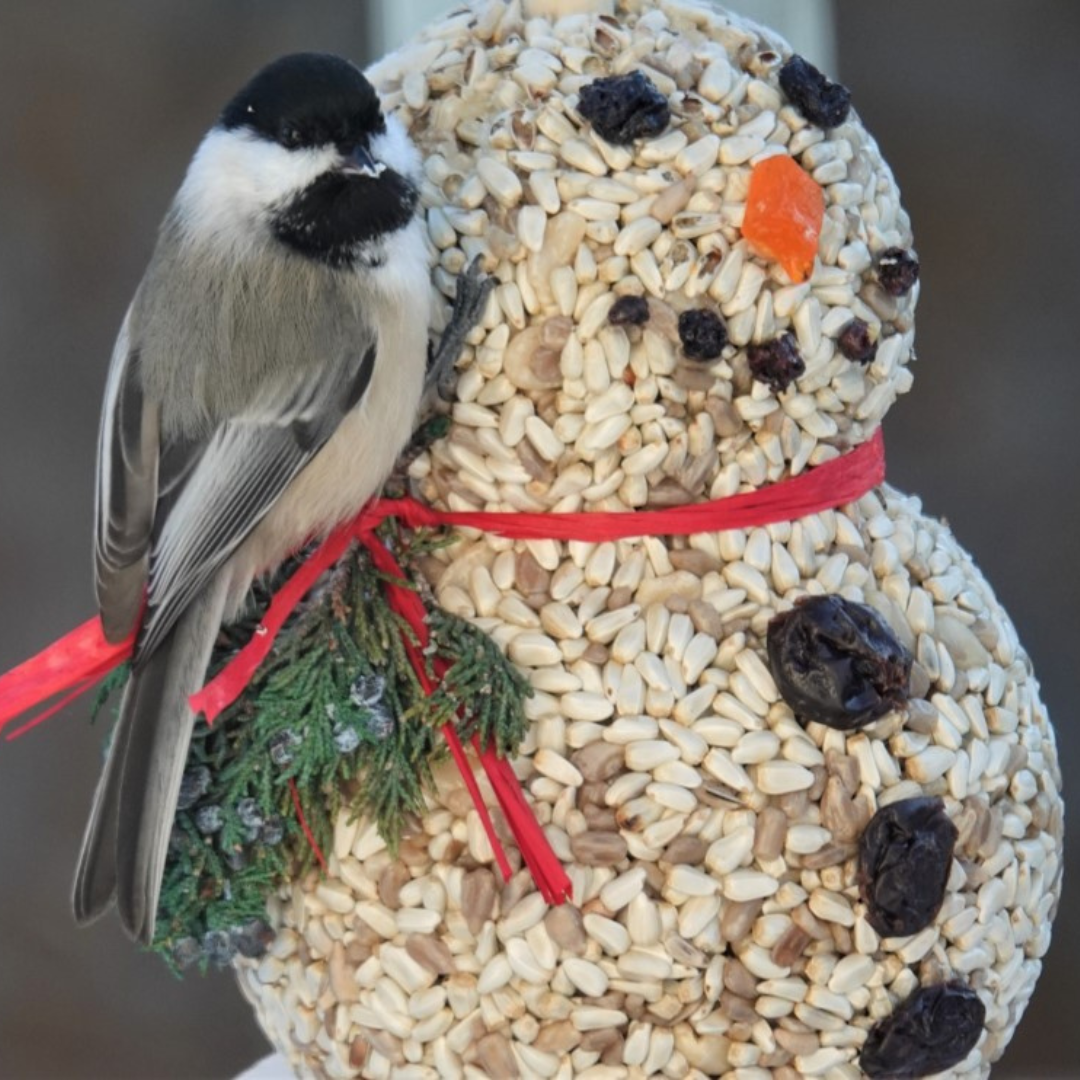
A chickadee eating seeds at a backyard feeder. Chickadees switch from a mostly insect diet in summer to include berries and seeds.
Chickadees are also big energy-savers. Like some of us that turn the house thermostat down at night to save energy while we are asleep, chickadees also turn down their thermostats at night using what is called nocturnal hypothermia. Chickadees reduce their body temperatures by as much as 10°C and this can provide a 50% energy savings overnight! One study showed that even reducing body temperature by only 8°C can increase the time to when a chickadee needs to eat to re-fuel by well over an hour. This extra time could spell the difference between overnight survival and death.
Finding a warm roosting spot to stay overnight is also important. Hunkering down in a tree cavity provides a microclimate where heat loss is minimized. Tree cavities can provide an effective temperature difference almost 15°C higher than at an exposed site. This can mean an additional 35% energy saving and greatly increase fasting endurance, the time between required feedings, by seven hours! On very cold days, chickadees spend almost ¾ of their time at their roosting site. This explains why our backyard feeders, just when you might think they would be busiest, seem mysteriously chickadee-free on very cold, windy days.
But when chickadees wake up in the morning and do need to feed, what are they eating and where are they finding it? In summer, chickadees eat mostly insects but in winter, when it is more difficult to find overwintering insect eggs, larvae, and adults, about half of their diet is seeds and berries. Chickadees are opportunistic and readily visit feeders. But they are not reliant on feeders to get through the winter, in part because they store food!
Chickadees are famous for taking seeds and berries and caching them in a hiding spot, and rarely in the same place. This reduces the risk of losing access to food in the future. On a tough winter day there is a store of available food. And having many, separate places protects this important food source; if all the seeds are hidden at the same spot, perhaps a squirrel, mouse, or other bird might discover them and have a feast, or poor weather might destroy the cache. Having hundreds of individual, safer hiding spots does create a different problem, however. The chickadee needs to remember where to find them all again. Research has shown that chickadees are up to the task, able to recall the locations of hundreds, even thousands, of stored seeds – for up to a month!

Chickadees quickly learn to take seeds from patient humans. Will this chickadee eat the seed right away or will it store it to relocate later in the winter when food is scarce? (Images ©Peter Taylor)
Chickadees that rely on stored food have a relatively enlarged part of the brain, the hippocampus, that is important for spatial memory. Although some research initially suggested that the hippocampus increases in size in the fall, potentially to accommodate these memories, more recent work is inconclusive. However, it is no less spectacular that chickadees in harsher northern climates, that would be expected to have a heavier reliance on stored seeds, have a larger hippocampus with more and larger neurons than do chickadees in southern populations. This does suggest that natural selection in a harsher climate has favoured individuals with heritable traits that increase spatial memory.
The next time you see a black-capped chickadee flitting about on a frigid day, perhaps consider all that is going on inside that tiny ball of fluff to get it through the winter. Chickadees do make even our coldest winters cheerier, but there is a lot of serious work going on under that black cap.
If you can’t find a chickadee outside, you can see them in the Boreal Forest and Parklands galleries in the Manitoba Museum. And you can learn about winter adaptations of many kinds of animals throughout the galleries.
[For further, more detailed summaries of chickadee winter biology, see: Pravasudov, V.V. et al. (2015) Environmental influences on spatial memory and the hippocampus in food-caching chickadees. Comparative Cognition & Behavior Reviews, 10, 25–43.; Olsen, J.R. (2009) Metabolic performance and distribution in black-capped (Poecile atricapillus) and Carolina chickadees (P. carolinensis). PhD Dissertation, The Ohio State University.]




